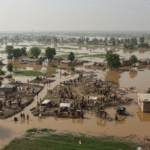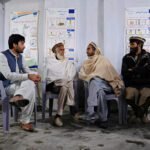URAAN Pakistan is the current government’s economic roadmap aimed at redirecting Pakistan toward sustainable growth. The plan revolves around five key pillars—Exports, E-Pakistan, Environment, Energy & Infrastructure, and Equity & Empowerment—positioning them as the ‘rocket fuel’ for the country’s economic revival.
While this initiative is a step in the right direction, its success hinges first and foremost on structural reforms, previous national transformation plans such as the one in 2010 and 2015 also stated such ambitious targets only to fall short due to a lack of reforms, strictness in governance, public transparency, and Pakistan’s wavering commitment to these projects.
The field of Behavioral Economics introduced the theory of adaptive expectations, to simplify; we (economic agents) make decisions about or purchases/consumptions based on previous information- considering Pakistan’s history with transformative projects- URAAN Pakistan is a hard sell.
Anyone who has read an article prior to this review on URAAN Pakistan would be familiar with the use of the word ”ambitious” to describe the initiative’s goals- the goals are exactly how they have been described.
Boosting exports to reduce international dependency and promote home-growth and achieve a target export of USD $60 billion. The previous ambitious target in the 2010 and 2015 economic transformation plans was to reach USD $150 billion in exports by 2025, whereas actual exports at 2023 levels are around USD $35 billion, a mere 23% of what was put forward. Further shifting global political dynamics precisely and specifically due to Trumps policies towards the global market, to quote Sadia Sulaiman from her article Trump’s Victory Poses Several Challenges for Pakistan
“Islamabad’s waning relevance in U.S. foreign policy — especially as Washington is distracted by wars in the Middle East and Europe and has prioritized India to counterbalance China in the Indo-Pacific — does not suggest a positive trajectory for the U.S.-Pakistan relationship under Trump.”
Ironically, as URAAN Pakistan is advocating to promote home growth, so are Trump’s policies towards bringing back the outsourced work to USA this poses a significant threat to Pakistan’s current account as USA is one of Pakistan’s top importers- Pakistan exported USD $5.18 billion according to 2023 data amounting 14.8% of Pakistani exports with the global political outlook uncertain and volatile such ambitious promises are at risk of falling short. Pakistan can and should explore other potential partners in the even of trade relations deteriorating.
Transitioning Pakistan towards an e–economy by promoting digital transformation to enhance efficiency and competitiveness. The institutions at play in this role require subsequent reforms and structural changes. Starting from educational development, Pakistan is a country with a literacy rate of 62.8% which is not itself a true representation as in a number of rural areas; if you are able to sign your name you are considered literate.
For digital transformation to take place Pakistan also requires the skilled labour needed to sustain and grow this and at the current literacy rate, digital transformation might just cause further inequality due to only skilled labor being able to adapt. We also lack the infrastructure, investment, and supportive tax policies for digital transformation to effectively occur.
In a 2024 survey 45.7% of the population has access to the internet meaning the remaining 54.3% will get left out or face hurdles and maybe even biases in an e-economy. Shifting towards environmentally-friendly policies to mitigate and adapt to climate change and addressing resource security. The key themes of this are
i) carbon reduction through increasing participation and regulation of carbon markets, green technology for transport and energy sector to reduce carbon emissions and increase efficiency.
ii) Water Security through water conservation, efficient distribution and demand management of key industries like agriculture and energy.
iii) Food Security is the other aspect which is proposed to be managed through increasing land availability, financial support, and modernization.
One major issue of these environmental policies is their contradiction with increasing homegrown production. It is an economic theory that if a developing country wants to progress and grow it will have to forgo environmental degradation-vice versa a country will face slow growth or recession if it focuses on environmental quality- so URAAN Pakistan aiming for increased domestic production and also environmental sustainability is counterproductive and ambiguous as Pakistan is already in the midst of a recession.
The trajectory of these policies is such that to increase exports domestic production needs to be increased in quantity and quantity which directly implies utilization of additional resources i.e. fuel. Emissions will likely increase due to increased production, this can be off-set by the carbon trade market and sequestration projects but other county’s examples have shown that these policies are effective but they aren’t sustainable for the long run.
Despite the shortfalls mentioned above- URAAN Pakistan can be a success story of consumer and business confidence is gained by the government as eight years of political instability, severe climate shocks, the lingering effects of past inflationary pressures, and a persistent brain drain have eroded consumer and investor confidence.
Without a boost in confidence and purchasing power through targeted stimulus measures, investment incentives, structural changes & governance, and tax reforms the 13th 5-year Plan will come at the cost of further burdening the already over-taxed middle-class workers.
Writer is a Graduate Scholar of Economics from the Institute of Business Administration- His undergraduate degree is in economics and his research during this time was particularly into traffic congestion and it’s relationship with infrastructure spending.











